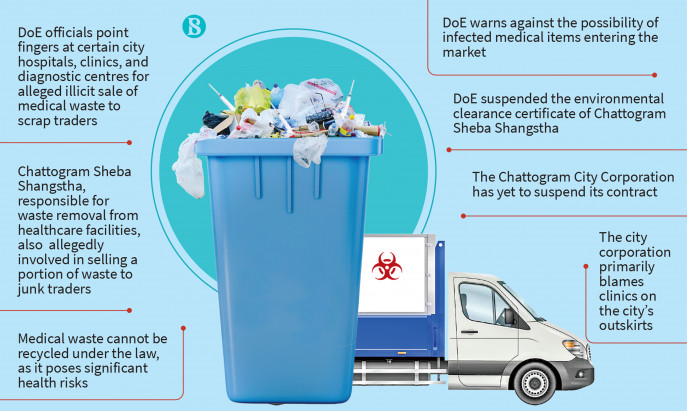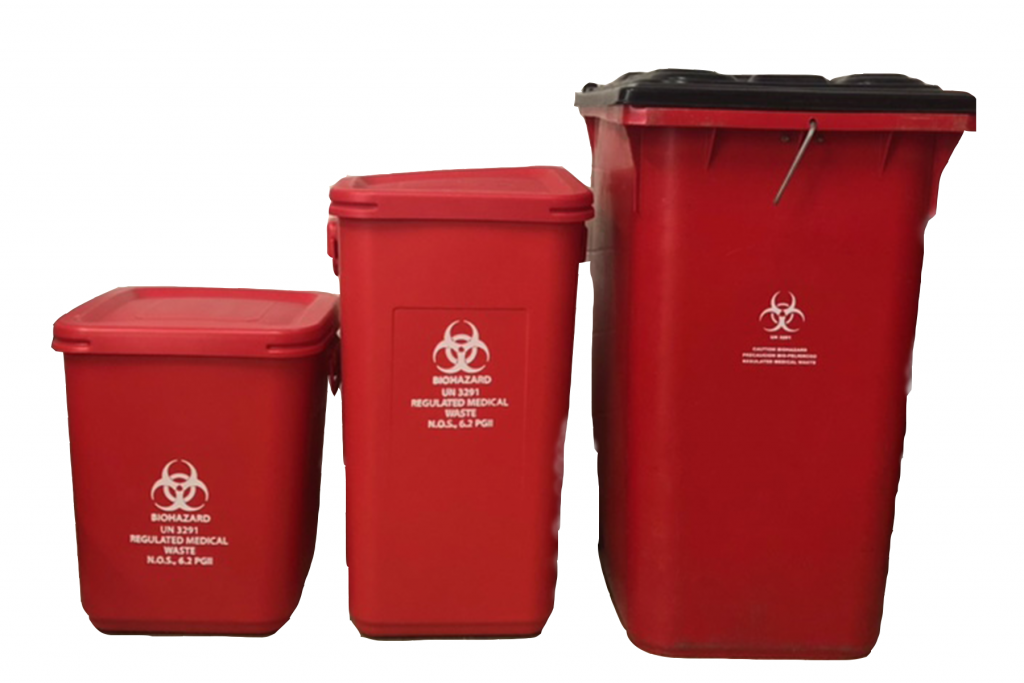Guardians of Tidiness: Local Medical Waste Removal Service for Your Peace of Mind
Guardians of Tidiness: Local Medical Waste Removal Service for Your Peace of Mind
Blog Article
Keep Ahead of Regulations: Expert Suggestions on Medical Waste Disposal
In a globe where the health care industry is continuously progressing, it is necessary for clinical facilities to remain in advance of policies when it comes to the proper disposal of medical waste. From comprehending the different groups of clinical waste to carrying out the appropriate collection and partition techniques, this discussion will give important insights and actionable ideas to help centers stay ahead of regulations in the ever-changing landscape of clinical waste disposal.
Comprehending Clinical Waste Categories
Understanding medical waste groups is important for appropriate disposal and administration in medical care centers. Medical waste describes any waste produced by health care activities that might position a danger to public health or the environment. It is vital to classify clinical waste precisely to guarantee its safe handling, transportation, therapy, and disposal.
There are a number of groups of clinical waste that health care centers require to be aware of. The most usual classifications include infectious waste, pathological waste, sharps waste, pharmaceutical waste, and chemical waste. Each classification has particular guidelines and laws for its appropriate monitoring and disposal.
Pathological waste refers to human tissues, body organs, or body parts that need unique handling and disposal. Drug waste consists of ended, unused, or infected medications that require careful handling and disposal.
Remaining Up-To-Date With Regulatory Changes
Staying existing with regulatory changes is essential for medical care centers to make certain compliance and proper management of medical waste disposal. medical waste removal service. With regulations frequently advancing, it is vital for healthcare facilities to stay updated to stay clear of charges, fines, and potential injury to the setting and public health
To stay in advance of governing modifications, health care facilities should establish a system for surveillance and monitoring updates. This can be done by registering for regulative e-newsletters, participating in conferences and workshops, and proactively participating in sector associations. Furthermore, facilities must assign a team member or team in charge of staying educated and sharing information to appropriate stakeholders.
Regular communication with regulative agencies is additionally essential. Medical care centers must establish relationships with regional, state, and government companies to guarantee they know any type of modifications in laws that might impact their waste administration practices. This can be done via routine conferences, engagement in public remark periods, and positive engagement with governing firms.
Furthermore, medical care centers ought to think about partnering with waste management firms that specialize in medical garbage disposal (medical waste disposal services with WasteX). These companies are usually fluent in the most up to date policies and can offer guidance and assistance to make sure conformity
Carrying Out Correct Collection and Partition Approaches
To effectively take care of medical garbage disposal, health care centers have to develop appropriate collection and partition methods based on governing guidelines. Implementing these techniques makes sure the secure handling and disposal of possibly hazardous products, shields the environment, and minimizes the threat of infections and injuries to medical care employees and the general public.
Proper collection and segregation techniques involve the use of designated containers and identifying systems. Health care centers ought to provide clearly classified containers for different sorts of medical waste, such as sharps, infectious waste, pharmaceutical waste, and non-hazardous waste. These containers should be color-coded and clearly marked to avoid confusion and promote easy recognition.
Furthermore, healthcare facilities must educate their personnel on the proper treatments for accumulating and setting apart clinical waste. This includes educating them on the different kinds of waste, the appropriate containers to make use of, and the value of adhering to guidelines and standards. Regular training sessions and refresher programs must be carried out to make certain that employee remain current on finest practices.
In addition, healthcare facilities ought to establish a system for normal collection and disposal of clinical waste. This might involve partnering with certified waste monitoring business that focus on clinical waste disposal. These firms will make sure that the gathered waste is moved and dealt with in compliance with regulatory demands.
Choosing the Right Disposal Methods

Incineration is among the most effective and typical techniques for disposing of certain types of medical waste, such as pathological waste and sharps. It involves the regulated combustion of waste at heats, decreasing it to ash. Nevertheless, incineration can release harmful toxins right into the air and add look at these guys to air pollution.

Various other disposal approaches consist of chemical treatment, microwave treatment, and landfilling. Chemical therapy involves the usage of chemicals to decontaminate and counteract the waste. Microwave therapy utilizes microwave energy to warm and sanitize the waste. Landfilling involves hiding the waste in a marked land fill location (medical waste disposal services with WasteX). Landfilling needs to be the last hotel due to the potential threat of contamination to soil and groundwater.
Guaranteeing Conformity Via Documents and Training
After thoroughly considering the proper disposal approaches for clinical waste, health care facilities need to guarantee conformity with laws and reduce environmental influence by carrying out effective paperwork and training treatments. This step is crucial in maintaining a safe and lasting environment for both healthcare employees and the basic public.

Training is similarly vital in ensuring have a peek at this website compliance with policies. Health care workers who manage medical waste must receive suitable training on waste segregation, taking care of, and disposal procedures. This training ought to cover topics such as the appropriate usage of personal safety devices, recognition of different types of waste, and the correct disposal techniques for every waste group. By supplying comprehensive training, healthcare centers can equip their staff to make educated choices and lessen the threat of incorrect waste disposal.
Conclusion
To conclude, staying ahead of guidelines in clinical garbage disposal is important for health care centers. medical waste removal. Understanding the different groups of clinical waste, remaining upgraded with governing adjustments, implementing proper collection and partition approaches, choosing the appropriate disposal methods, and ensuring compliance with paperwork and training are all important actions. By adhering to these standards, healthcare organizations can properly manage and get rid of of clinical waste in a liable and safe manner
From understanding the different classifications of clinical waste to carrying out the best collection and segregation approaches, this discussion will certainly give valuable insights and actionable suggestions to assist facilities remain ahead of guidelines in the ever-changing landscape of clinical waste disposal. - medical waste disposal services with WasteX
The most common classifications consist of infectious waste, pathological waste, sharps waste, pharmaceutical waste, and check this site out chemical waste. Medical care facilities must give clearly identified containers for different kinds of medical waste, such as sharps, contagious waste, pharmaceutical waste, and non-hazardous waste. Healthcare facilities need to establish a detailed system to record and track all facets of medical waste disposal, consisting of kinds of waste produced, quantities, and disposal techniques made use of. Medical care employees that handle medical waste must get ideal training on waste segregation, managing, and disposal treatments.
Report this page